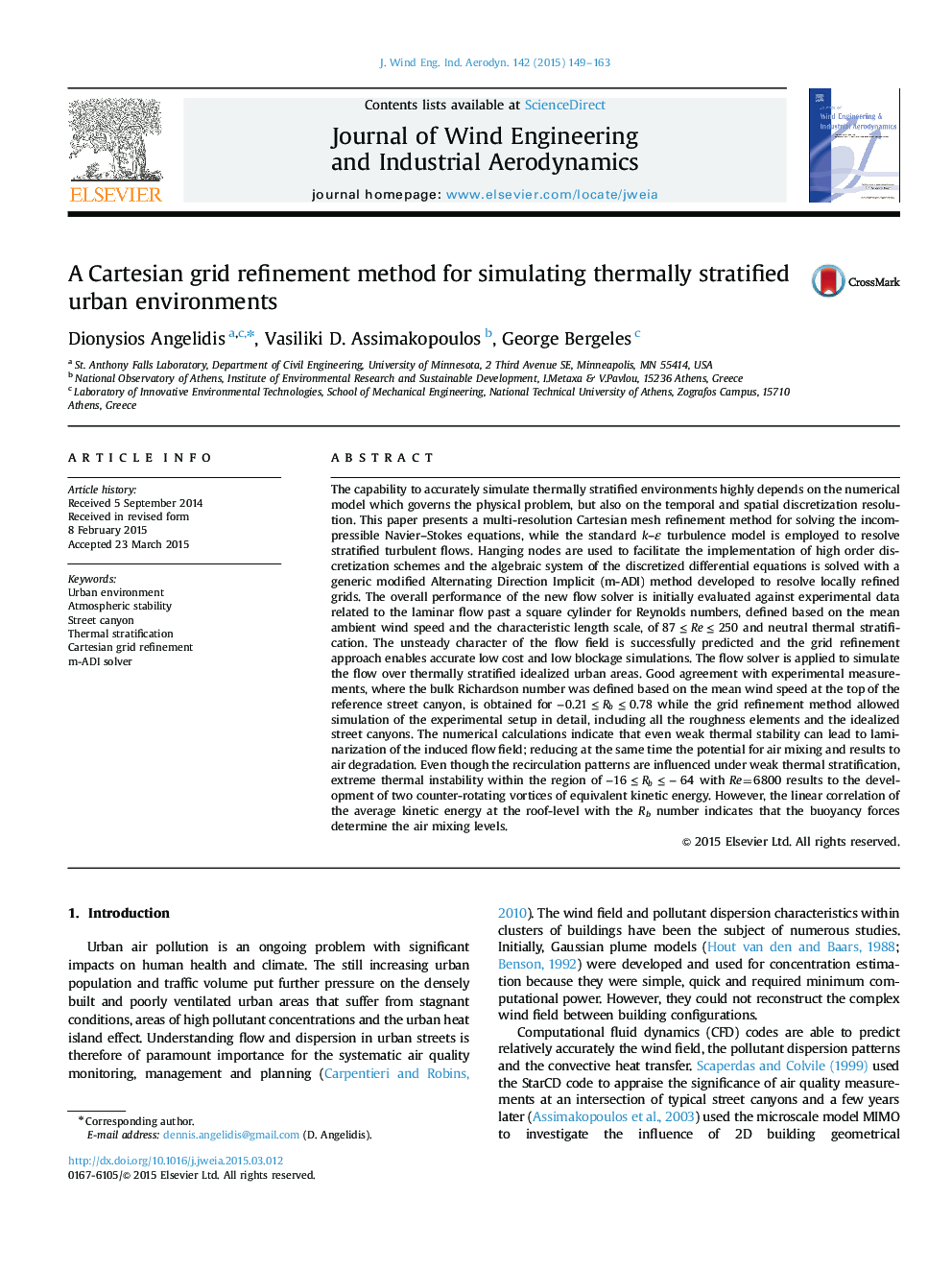| کد مقاله | کد نشریه | سال انتشار | مقاله انگلیسی | نسخه تمام متن |
|---|---|---|---|---|
| 6757579 | 511126 | 2015 | 15 صفحه PDF | دانلود رایگان |
عنوان انگلیسی مقاله ISI
A Cartesian grid refinement method for simulating thermally stratified urban environments
ترجمه فارسی عنوان
یک روش پالایش شبکه دکارتی برای شبیهسازی محیطهای گرمسیری شهری
دانلود مقاله + سفارش ترجمه
دانلود مقاله ISI انگلیسی
رایگان برای ایرانیان
کلمات کلیدی
موضوعات مرتبط
مهندسی و علوم پایه
مهندسی انرژی
انرژی های تجدید پذیر، توسعه پایدار و محیط زیست
چکیده انگلیسی
The capability to accurately simulate thermally stratified environments highly depends on the numerical model which governs the physical problem, but also on the temporal and spatial discretization resolution. This paper presents a multi-resolution Cartesian mesh refinement method for solving the incompressible Navier-Stokes equations, while the standard k-ε turbulence model is employed to resolve stratified turbulent flows. Hanging nodes are used to facilitate the implementation of high order discretization schemes and the algebraic system of the discretized differential equations is solved with a generic modified Alternating Direction Implicit (m-ADI) method developed to resolve locally refined grids. The overall performance of the new flow solver is initially evaluated against experimental data related to the laminar flow past a square cylinder for Reynolds numbers, defined based on the mean ambient wind speed and the characteristic length scale, of 87â¤Reâ¤250 and neutral thermal stratification. The unsteady character of the flow field is successfully predicted and the grid refinement approach enables accurate low cost and low blockage simulations. The flow solver is applied to simulate the flow over thermally stratified idealized urban areas. Good agreement with experimental measurements, where the bulk Richardson number was defined based on the mean wind speed at the top of the reference street canyon, is obtained for â0.21â¤Rbâ¤0.78 while the grid refinement method allowed simulation of the experimental setup in detail, including all the roughness elements and the idealized street canyons. The numerical calculations indicate that even weak thermal stability can lead to laminarization of the induced flow field; reducing at the same time the potential for air mixing and results to air degradation. Even though the recirculation patterns are influenced under weak thermal stratification, extreme thermal instability within the region of â16â¤Rbâ¤â64 with Re=6800 results to the development of two counter-rotating vortices of equivalent kinetic energy. However, the linear correlation of the average kinetic energy at the roof-level with the Rb number indicates that the buoyancy forces determine the air mixing levels.
ناشر
Database: Elsevier - ScienceDirect (ساینس دایرکت)
Journal: Journal of Wind Engineering and Industrial Aerodynamics - Volume 142, July 2015, Pages 149-163
Journal: Journal of Wind Engineering and Industrial Aerodynamics - Volume 142, July 2015, Pages 149-163
نویسندگان
Dionysios Angelidis, Vasiliki D. Assimakopoulos, George Bergeles,
